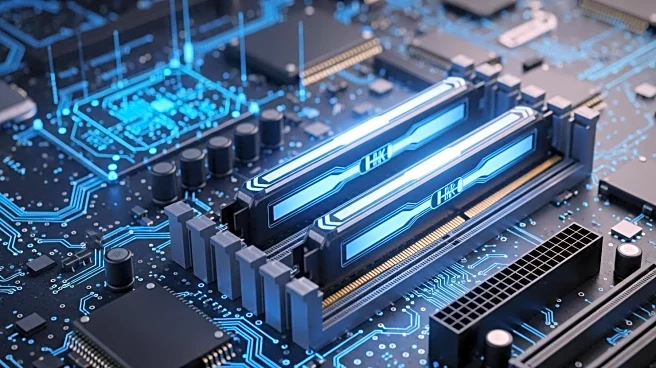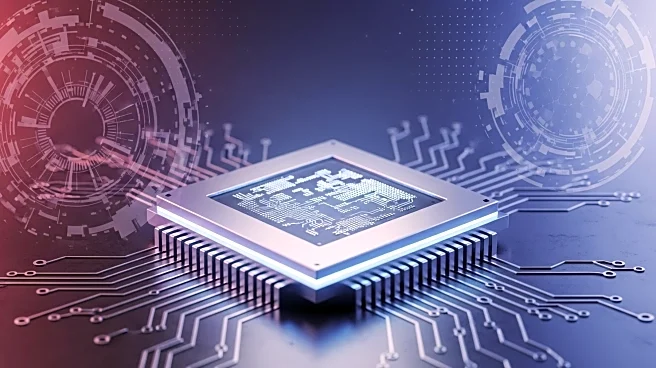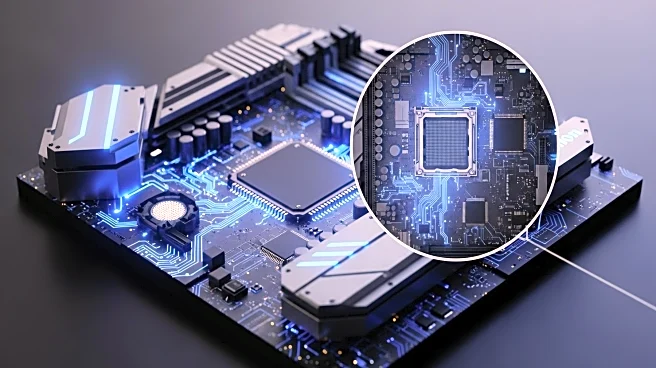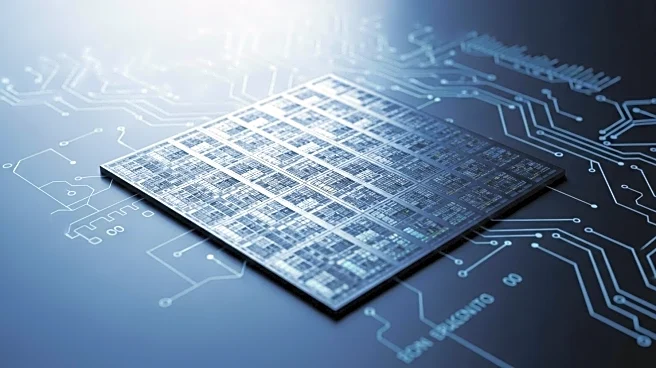What is the story about?
What's Happening?
AMD has filed a patent for a 'High-Bandwidth DIMM' (HB-DIMM) for DDR5 memory, which could potentially double the data rate from 6.4 Gbps to 12.8 Gbps per pin. This innovation involves adding buffer chips and 'pseudo' memory channels on the module, effectively acting like two channels in one stick. The patent claims this bandwidth boost can be achieved without changing the underlying DDR5 chips. This development is aimed at addressing the increasing memory bandwidth demands of high-end GPUs, servers, and AI workloads.
Why It's Important?
The potential doubling of DDR5 memory speed could significantly impact industries reliant on high-performance computing, such as AI and graphics processing. As applications demand more memory bandwidth, AMD's innovation could provide a solution to the bottleneck faced by current DDR5 speeds. However, the adoption of this technology faces challenges, as it requires support from motherboards, chipsets, and CPUs. The success of this patent could influence future memory standards and the competitive landscape between AMD and other tech giants like Intel.
What's Next?
For AMD's HB-DIMM to become a reality, it would need to gain industry-wide support and potentially become a JEDEC standard. This would require collaboration with other major players in the tech industry, such as Intel, Samsung, and Micron. The timeline for this technology to reach the market remains uncertain, and it may take years before it becomes available for consumer PCs.
AI Generated Content
Do you find this article useful?














